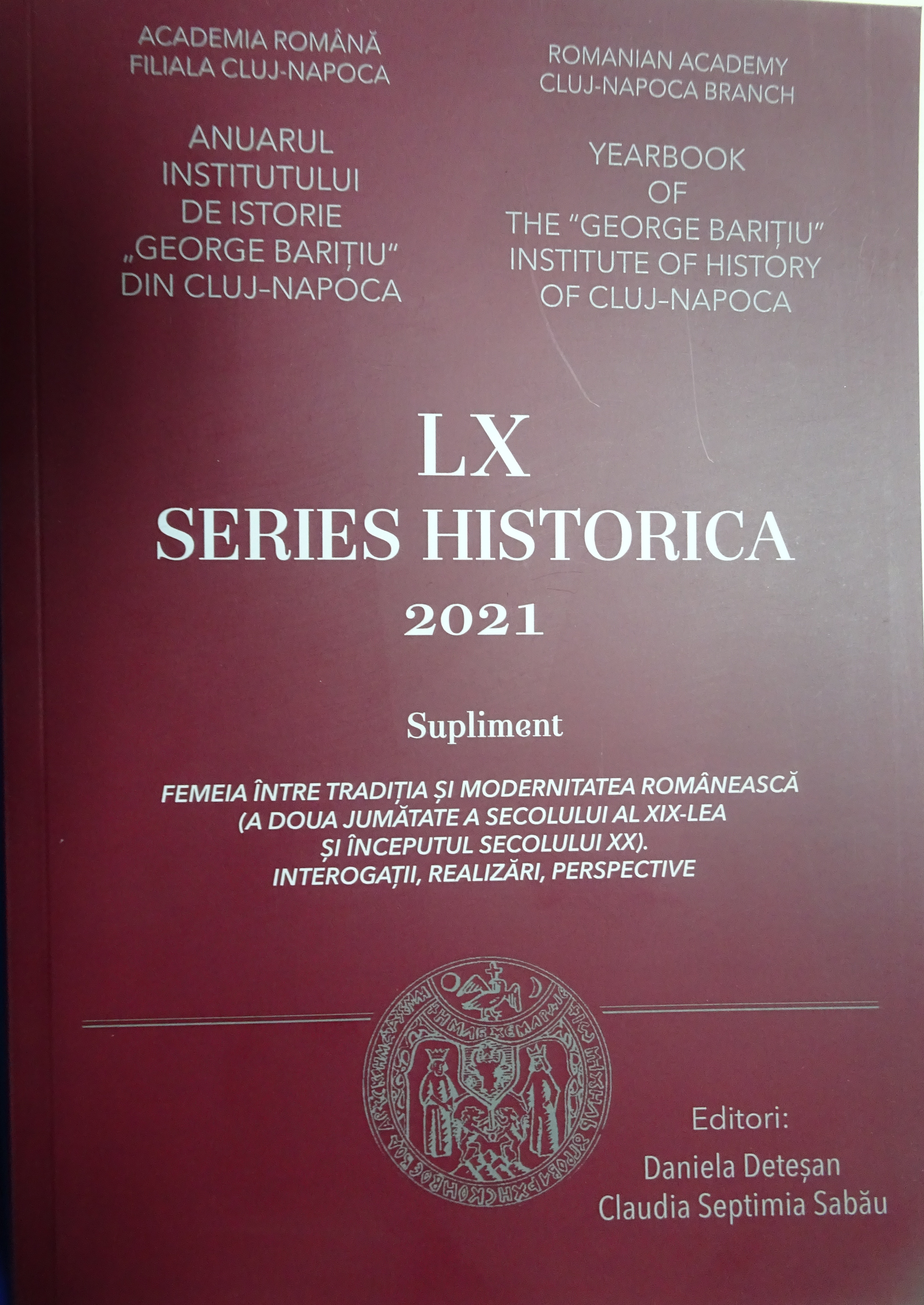Condiția femeii în lumea rurală a comitatului Satu Mare la finalul secolul al XIX-lea și începutul secolului XX
The Condition of Women in the Rural World of the Satu Mare County at the End of the 19th Century and at the Beginning of the 20th Century
Author(s): Paula ViragSubject(s): Social history, Gender history, 19th Century, Pre-WW I & WW I (1900 -1919)
Published by: Editura Academiei Române
Keywords: women; men; family; marriage; household;
Summary/Abstract: At the end of 19th century and the beginning of the 20th century, the women had a difficult and complicated style of life. For them, the difficulties started at young age, when the girls had to help their mothers, working together in the household. After they got a husband and they had their own family, this became the most important thing in their life and the entire activity was carried on around the husband, the children and the maintenance of an efficient ménage. For the women, the marriage represented the fulfillment of the „femininity”, because just inside the marriage the woman could express their sexuality and their motherhood. The rural society was still dominated by the church precepts, as well as by the talk of the village that would make the unwritten laws regarding the way of living together. Most of the times, couples would rather keep silent about their hard times together than taking the consequences of being judged by neighbors or by the members of the community. The physical efforts made in order to ensure the living, the material deficiencies, the alcohol, domestic violence (physical or verbal), fatigue, premature aging, deformation of body at women due to many births are just some reasons that wipe away the feelings between the husbands, if there had been any from the beginning of their marriage.However, there were few couples who would fall into the disgrace of the village and church by requiring breaking up, especially through divorce, as it is understood in terms of civil law. The number of divorced persons is very little. It increases gradually, as years pass, but it doesn't take ample forms. This increasing is explained by the fact that the rural society begins to modernize slowly, the influence of emancipation from the urban society grows stronger, changing the mentality and the way of life of the villagers. The 19th century society was focused on family, most people aiming to get married, to have children, to have a home, to establish the legal context for inheritance. The exceptions from this rule were punished by the community and church, whether Catholic or Calvinist. But, the monotony of a marriage dominated by the concern for tomorrow, the poverty and struggle for survival, fatigue, physical exhaustion, premature aging women, the countless births that change woman's body, children crying and asking for food, arguments, physical and verbal violence, are sufficient grounds for the individual willing to escape from a miserable world without love, if there was any love ever. Men and women alike, would feel frustrated, not satisfied, unfortunate in a failed marriage and, thus, running away from family obligations used to be a way to make up for the lost time within an unsuccessful relationship.
Journal: Anuarul Institutului de Istorie »George Bariţiu« - Series HISTORICA - Supliment
- Issue Year: LX/2021
- Issue No: 1
- Page Range: 103-116
- Page Count: 14
- Language: Romanian

